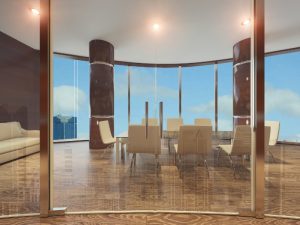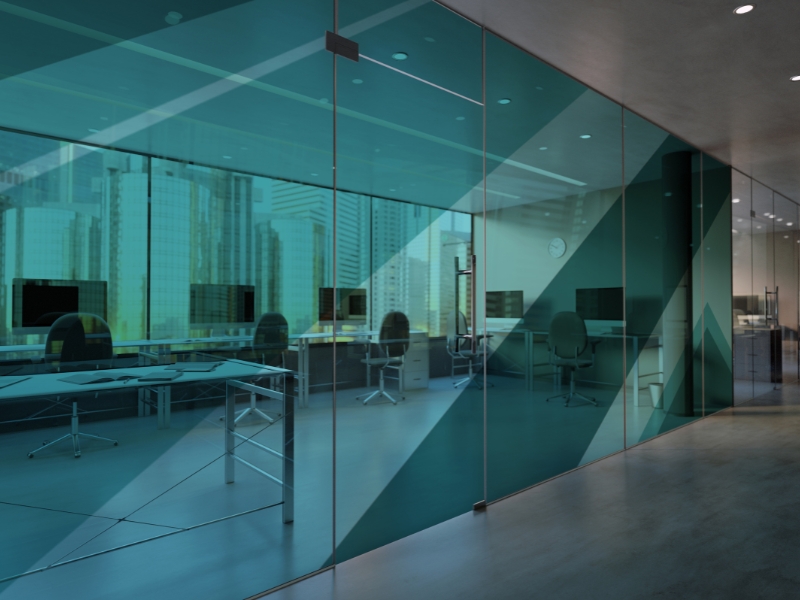Ever found yourself cringing as every phone call, keyboard tap, and whispered chat bounces around your office? A frameless glass partition might look sleek, but does it genuinely help keep noise under control? Many workplaces rely on traditional barriers that block vision but fail to soften sound. This article unpacks whether a frameless glass partition delivers the acoustic relief you need. You’ll see how design, thickness, and installation all play a part. By the end, you’ll know if this choice stacks up for your workspace.
What problems do traditional partitions create in offices?
Traditional partitions can create more headaches than they solve. Consider these common issues:
- Poor acoustic insulation: Thin panels or hollow walls leak sound between work areas, fuelling distractions and increasing stress when everyone can hear each conversation word-for-word.
- Limited daylight penetration: Blocking natural light creates darker spaces, which impacts mood and energy over the workday and can drive up artificial lighting costs in winter months.
- Inflexible configurations: Fixed partitions are a hassle to move when layouts change or teams expand, especially if your lease requires returning the space to its original condition.
- Dust traps and maintenance hassles: Fabric panels collect grime that’s hard to clean properly, making the office feel tired and unprofessional, no matter how often they’re vacuumed.
Over time, these problems pile up, leaving your office looking dated and feeling noisy.
How can a frameless glass partition improve your workspace?
Glass partitions solve plenty of the problems above. Here’s what they bring to the table:
- Better noise management: Laminated glass and quality seals help dampen conversations and ambient noise, offering more consistent acoustic performance than many stud walls.
- Maximised natural light: Full-height glass panels brighten spaces and lower dependence on artificial lighting, which can help improve productivity and morale in shared areas.
- Flexible configurations: Modular designs allow for reconfigurations without extensive renovation, which is handy when project teams form and disband more frequently.
- Contemporary aesthetics: Clean lines and transparency lift visual appeal and support modern interiors, making a stronger impression on visiting clients or stakeholders.

Choosing premium frameless glass partition designs can help you balance openness with acoustic performance more effectively.
Are there any challenges with frameless glass partition installations?
Installing frameless glass isn’t always a walk in the park. Here are a few things to consider:
- Precise installation requirements: Misaligned channels or uneven floors can leave unsightly gaps that compromise acoustics and collect dirt over time.
- Custom fabrication timelines: Each panel is made to order, which can extend lead times by several weeks if measurements are delayed or production schedules change.
- Impact safety regulations: Workplaces must comply with glazing standards to protect occupants, especially in high-traffic corridors or breakout zones.
- Acoustic performance balancing: Thicker glass improves noise control but increases weight and cost, which may affect budget allocations or require extra support structures.
Before locking in a design, understand glazing safety standards for human impact compliance to ensure your fit-out ticks every box.
What is the best way to maintain a frameless glass partition?
Keeping glass partitions looking sharp is easier than you think. Follow these tips:
- Regular cleaning: Wipe glass weekly with neutral cleaners to prevent smudges and residue, making sure to cover edges where fingerprints can collect unnoticed.
- Seal inspections: Look for wear on seals that could compromise acoustic performance, especially along skirting channels and ceiling tracks.
- Hardware checks: Tighten fixings periodically to keep panels secure and aligned, reducing the risk of movement from vibration or door slams.
- Scratch prevention: Use microfibre cloths and avoid abrasive pads when cleaning, particularly around corners and etched privacy bands.
When you explore frameless partition thickness options for offices, keep in mind that thicker panels often stay in better condition over time and make maintenance easier.
How does a frameless glass partition affect lighting and privacy?
Glass partitions can balance brightness and confidentiality if you plan carefully. Here’s how:
- Daylight amplification: Full-height panels allow sunlight to flow into central spaces, cutting power consumption and helping plants thrive in common areas.
- Strategic frosting: Applied films or acid-etched finishes obscure sensitive areas without losing brightness, ideal for meeting rooms or personal work zones.
- Acoustic performance: Sealed joints and laminated glass limit sound travel between rooms, which keeps sensitive discussions private without closing off the space visually.
- Design consistency: Glass integrates smoothly with both contemporary and traditional interiors, creating a unified look that feels considered and professional.

If you’re keen on enhancing ventilation, consider improving air flow with glass partition systems to keep spaces feeling fresh.
Is a frameless glass partition suitable for every office?
While glass partitions work well in most environments, they aren’t perfect for every setting. Think about these factors:
- Traffic levels: Heavy equipment or foot traffic can increase the risk of damage, especially near storage zones or frequently used corridors.
- Absolute privacy needs: Some workplaces require additional barriers to maintain confidentiality, such as HR or legal offices.
- Budget constraints: Upfront costs are often higher than standard partitions, requiring clear justification in project proposals or fit-out plans.
- Building constraints: Uneven floors or heritage elements may complicate installation and necessitate custom hardware or extra engineering support.
As you consider your options, carefully evaluate the frameless glass partition alongside alternative approaches to see what best suits your needs. Table: Frameless glass partition quick comparison
| Feature | Traditional Partitions | Frameless Glass Partitions |
| Light Transmission | Limited | High |
| Acoustic Performance | Variable, often poor | Consistently strong if specified |
| Maintenance Requirements | Moderate to high | Low |
| Flexibility for Reconfiguration | Low | High |
| Aesthetic Impact | Basic and dated | Contemporary and elegant |
Final thoughts
Frameless glass partitions blend design and functionality, transforming how offices look and perform. With the right thickness, seals, and installation approach, they can support privacy and reduce noise while keeping spaces bright and connected. These partitions are a clever way to create modern work environments that feel open yet private. For tailored advice on planning and specifying glass solutions, learn how Intrinsic Glass makes office upgrades effortless to see which options fit your workspace best and help your team thrive long-term.

